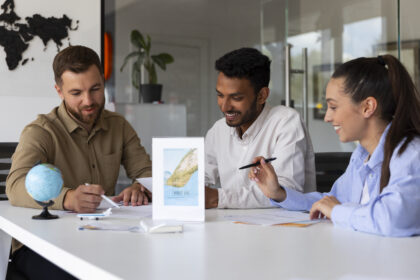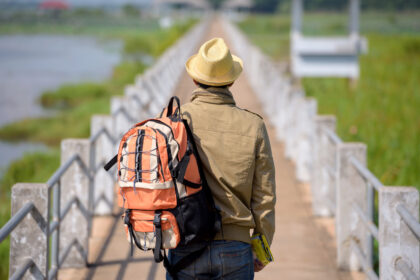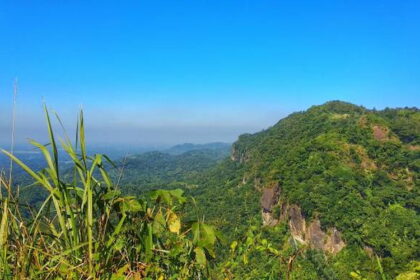Mount Kilimanjaro is not only the tallest mountain in Africa but also one of the most iconic trekking destinations in the world. Rising majestically to 5,895 meters (19,341 feet), this dormant volcano in northern Tanzania draws thousands of adventurers each year. Unlike other high peaks that require technical mountaineering skills, Kilimanjaro climbing is achievable for most physically fit trekkers, making it a bucket-list experience for travelers worldwide.
In this article, we’ll walk you through everything you need to know about climbing Mount Kilimanjaro—from choosing the best routes and preparation tips to how you can combine your trek with Tanzania safari packages for the ultimate adventure.
Why Climb Mount Kilimanjaro?
Climbing Kilimanjaro is a journey like no other. Here’s why it’s considered one of the greatest trekking adventures on Earth:
- Accessible Yet Challenging: Kilimanjaro is the world’s tallest free-standing mountain, but climbing it doesn’t require ropes, crampons, or technical gear. With determination and proper preparation, most trekkers can reach the summit.
- Scenic Diversity: As you ascend, you’ll pass through multiple ecosystems—from lush rainforests and moorlands to alpine deserts and snow-capped glaciers. Few treks in the world offer such dramatic landscape changes.
- Personal Achievement: Standing at Uhuru Peak, the “Roof of Africa,” gives climbers a profound sense of accomplishment and an unforgettable memory.
Routes for Kilimanjaro Climbing
There are several routes up Kilimanjaro, each offering different levels of difficulty, scenery, and success rates. Choosing the right one is key to your experience.
- Marangu Route (“Coca-Cola Route”)
Easiest and most popular route.
Accommodation in huts rather than tents.
Typically 5–6 days.
Lower success rates due to shorter acclimatization period. - Machame Route (“Whiskey Route”)
Known for stunning views and varied terrain.
Requires 6–7 days.
Higher success rate due to better acclimatization. - Lemosho Route
One of the most scenic and less crowded routes.
Takes 7–8 days.
Excellent acclimatization profile. - Rongai Route
Approaches from the northern side near the Kenyan border.
Drier and less crowded.
Takes 6–7 days. - Northern Circuit
Longest and newest route, taking 9–10 days.
Offers the best acclimatization and highest success rates.
Best Time for Kilimanjaro Climbing
While you can climb Kilimanjaro year-round, the best times are during the dry seasons:
- January to March: Cooler temperatures and fewer crowds.
- June to October: Peak trekking season with the clearest skies and warmer weather.
The rainy seasons (April–May and November) are less ideal due to slippery trails and cloudier conditions, but they can offer a quieter experience.
Preparing for the Climb
Although Kilimanjaro climbing doesn’t require technical skills, preparation is essential for a safe and successful trek.
- Physical Training
Focus on cardiovascular fitness, leg strength, and stamina.
Practice hiking on varied terrains and at higher altitudes if possible. - Acclimatization
Choose longer routes to give your body time to adjust to the altitude.
Follow the “climb high, sleep low” principle. - Gear Essentials
Good hiking boots, layered clothing, trekking poles, a sleeping bag, and a headlamp.
Don’t forget hydration packs and altitude sickness medication if recommended. - Mental Preparation
Kilimanjaro is as much a mental challenge as a physical one. Determination and patience go a long way.
What to Expect During Kilimanjaro Climbing
- Daily Hiking: Depending on your route, you’ll hike 4–8 hours daily, except for the summit day, which can take 10–14 hours.
- Guides and Porters: Licensed guides lead all climbs. Porters carry equipment, set up camps, and prepare meals, allowing you to focus on the trek.
- Summit Night: The final ascent usually starts at midnight. Reaching Uhuru Peak at sunrise is an emotional highlight for every climber.
Combining Kilimanjaro Climbing with Tanzania Safari Packages
One of the unique advantages of trekking Kilimanjaro is its location near Tanzania’s most famous national parks. After your climb, you can easily extend your trip with Tanzania safari packages, creating the ultimate African adventure.
Imagine conquering Africa’s highest mountain and then relaxing while spotting lions, elephants, and giraffes in the Serengeti or Ngorongoro Crater. Many operators offer combination tours that include both Kilimanjaro climbing and safaris, giving you the best of Tanzania in a single trip.
Costs and Booking Tips
- Cost Range: Most climbs cost between $2,000–$4,000 depending on the route, duration, and level of comfort.
- Park Fees: A large portion of the cost goes toward conservation fees and permits.
- Choose Reputable Operators: Look for companies with certified guides, good safety records, and positive reviews.
- Book Early: Popular routes and safari extensions sell out months in advance, especially during peak season.
Final Thoughts
Kilimanjaro climbing is more than just a trek—it’s a life-changing journey. From the lush foothills to the icy summit, every step offers breathtaking views and unforgettable experiences. With proper preparation, the right route, and support from experienced guides, standing at the Roof of Africa is an achievable dream for many adventurers.
And why stop there? By combining your climb with Tanzania safari packages, you can create the perfect African adventure—summiting Kilimanjaro and then immersing yourself in the untamed beauty of the Serengeti, Ngorongoro, or Tarangire.
If you’ve ever dreamed of pushing your limits while experiencing some of the most incredible landscapes on Earth, Kilimanjaro is waiting. Your journey begins with one step—will you take it?


